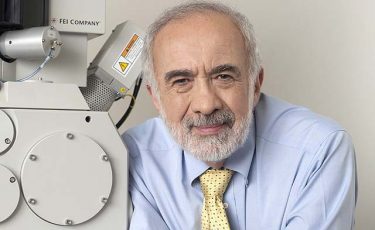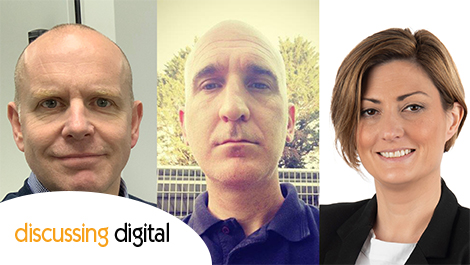Right now we are working through times that none of us could ever have anticipated. It can be hard to stay positive or to think about the future, but there are still plenty of things in print to be proud of and to look forward to. We asked three people with years of experience in the printing space what new technology or development they were most excited about…
Lance Hill
Managing director – 8 Days a Week
Having worked in the print and direct mail industry for over 30 years, and for some of the most innovative and creative businesses, technology and innovation has always been close to my heart. When you look across the industry there have been some brilliant developments and innovations, variable digital colour printing for starters. In its early form, back in the 90s the quality wasn’t great but you could see the potential; now it has come of age.
I’ve worked with inkjet since I was an apprentice and to see how the quality has advanced and the [current] capability is fantastic. It’s this ongoing and evolving technology that excites me the most as it delivers on multiple levels. Not only does it offer fully variable data driven images and messages for greater targeting, but the quality is now comparable with litho which is a game-changer.
Then if you look at it from a sustainable and environmental angle it really starts to add up, as more and more businesses are looking to improve their credentials as part of their overall corporate messaging and brand. There is less chemistry and waste involved, lower energy consumption and more of the machine’s parts are fully recyclable.
Having just invested in the latest inkjet technology from Xerox with the Baltoro, I can already see the positive impact it is having on efficiency, never mind reduced energy consumption versus a toner-based device. It’s a very competitive marketplace for the kit producers, which of course keeps them pushing harder to create that market-leading product, which as a user we can take advantage of. Like everything nowadays, it’s upgradeable, just like an iPhone, so we’ll no doubt follow that trend too!
Aaron Hartley
Print & mail services manager – Delt Shared Services
Benny Landa is my print hero. A peerless risk taker, an innovator and probably the most influential living figure in the print industry. The Indigo in 1993 revolutionised digital print and started to slowly bridge the gap between digital and litho. He’sdone it again with the Nanographic Printing Press. The thought of a B1 digital press that could run almost as fast as a litho press would have been outlandish to anyone but Landa and with their S10 press they have achieved it.

Benny Landa – Aaron Hartley’s print hero
It isn’t just about sheet size and speed. Running at 6500 sheets per hour at B1 is an incredible achievement for a digital machine but the S10 has achieved a lot more than just size and speed. Don’t forget either that it’s digital and it can print variable data.
The ink technology is environmentally friendly and the range of substrates available to the press is remarkable. The inks are water based and, as such, are eco-friendly, as long as the substrate is recyclable, everything the press produces is easily recyclable. Water is added on site to the inks, this cuts down on the carbon emissions as the consumables are delivered in a lighter form, smaller form.
The S10 can print on just about any flat sheet so it’ll likely be attractive to every sector of the industry. As with most presses, users will discover new substrates to push through but Landa’s website lists a massive catalogue of available substrates. It’s impressive.
Lastly, but not least, the S10 press looks beautiful. Aesthetically, it’s a super-car. A lot of print equipment looks functional but the S10 looks stunning and they’ve called the rip an Operator Cockpit that features video feeds and a touch screen interface.
They’re expensive but sometimes, ground breaking technology is. One day, we’ll all be printing using Nanographic inks.

Ms Spencer is glad that Fespa has been rescheduled
Nicole Spencer
Operations director – RMC
We had been looking forward to attending Fespa last month as it’s always a great opportunity to see new developments and innovations within the industry. I’m pleased it will still take place later this year as there are a few things we’d like to look at. In terms of wide format printers, I’ve not yet seen the Durst P5 printing as when we visited Brixen to see the new headquarters it wasn’t quite up and running. We’ve also not seen the Vutek H5 which looks good. Hopefully they’ll both be on display in October as I’d like to see them in action.
Although it’s not a technology we have invested in I’m always interested in seeing 3D printers. We’ve previously thought the technology isn’t quite there yet for what we’d want to use it for. I think Mimaki have some great kit available but as it’s such a slow process it makes it too expensive for our clients to be interested. I don’t think it will be long before printing becomes much quicker which will mean the end user pays less for the product.
I think some of the MIS platforms are having exciting developments at the moment. The wide format kit is all pretty good right now so it’s important to have a system to keep up with it. We’ve been looking into cloud-based systems that allow our clients to connect with us in ways that haven’t been possible before. The processes are streamlined and allow much greater control over estimating and production than we have seen in previous years. There are a couple of new systems which we are interested in that I think are going to give the bigger players within the industry a run for their money. Once we are back at work, we will be looking to improve our operating and work-flow systems.





